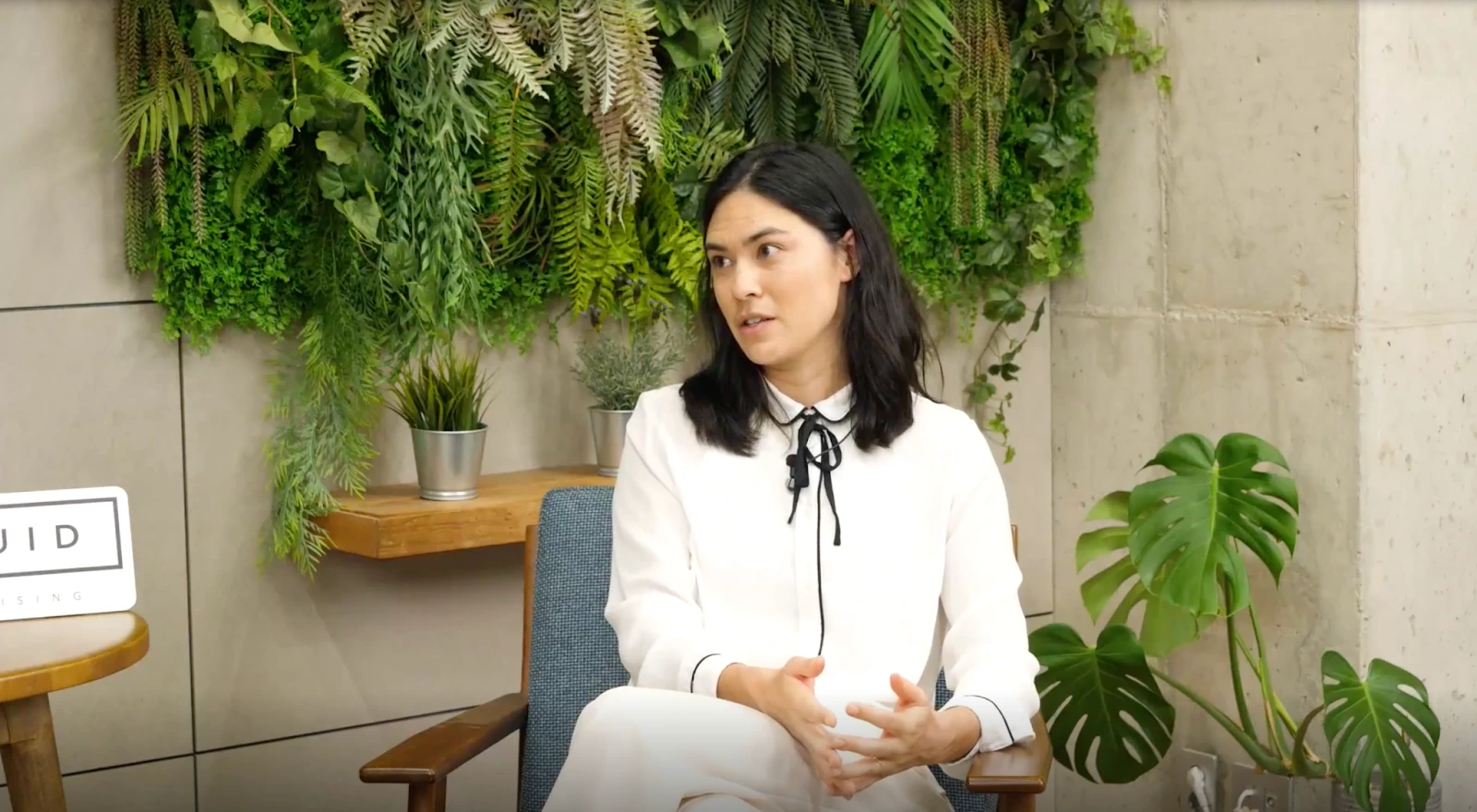The Steam Marketing Playbook for Mid-Sized Game Studios


Jetstream Sessions with Nikki DePaola, VP of Global Media at Liquid Advertising
For most mid-sized game studios, launching on Steam isn’t a maybe. It’s the move. The platform opens the door to millions of PC gamers, offers built-in community features, and can even lead to console attention if things go well.
But there’s a catch. Most Steam marketing advice leans one of two ways. It’s either built for indie devs working with near-zero budget, or it’s tailored to AAA giants with global IPs and blockbuster trailers. If you’re somewhere in the middle — not tiny, not enormous — it can feel like no one’s talking to you.
That’s why Roi Nam, CEO of Airbridge & Airflux, sat down with Nikki DePaola, VP of Global Media at Liquid Advertising, to set the record straight. Nikke’s agency has launched everything from Blizzard hits to Nexon, Bethesda, and a wide range of indie and mid-sized AA titles. Nikki knows what works, and what breaks, when studios of all sizes try to make it on Steam.
Here’s what she wants mid-sized studios to know.
🎥 Watch the full interview video
Wishlists are important on Steam. They’re one of the few pre-launch metrics you can track. They influence algorithmic visibility and indicate early audience interest. But wishlists alone won’t carry your game.
“We’ve seen instances where clients are excited about their chart position, but disappointed by the conversion rate because most of the Wishlists were forced.”
Forced or incentivized wishlists might push your numbers up, but they don’t guarantee launch-day traction. Nikki’s advice is to focus on quality over quantity. Her benchmark? 70% or more of your wishlists should be organic and regionally relevant.
“While a total of X wishlists will earn you visibility on the platform, that visibility won’t resonate strongly with your target audience unless there is real word of mouth happening in parallel.”
If your game isn’t getting organic mentions on Discord, Reddit, or YouTube comments, your wishlist chart won’t mean much. Steam rewards momentum, not just math.

A lot of studios launch with just a Steam page, a trailer, and some ad spend. That’s not enough. Players on Steam don’t convert based on one asset. They follow a trail. They want to hear buzz, see opinions, browse reactions, and read about your game from a source they trust.
“Wishlists are basically a proxy KPI for how excited people are about your game. When you think about it from that perspective, the question isn’t necessarily about how do you hit your Wishlist goal. It becomes how do we get our consumers excited about this release.”
That shift changes everything. Your wishlist count becomes a result, not a goal. And the effort behind it expands. Nikki recommends including six building blocks in every serious Steam launch.
You need:
If you treat Steam like a one-shot launch moment, you’re doing it wrong. Think of it as a runway, not a rocket.
Launch day isn’t your grand finale. It’s the start of a very public test. The Steam algorithm is watching. Players are watching. And your strategy needs to stay sharp and ready to respond. Beyond having a fully customized strategy and media approach, there are a few common must-haves to keep in mind.
“One is having a plan B in place if you are anticipating mixed reviews or worse. How can you make the most out of a suboptimal situation?”
Some games crush Day 1. Others stumble. Either way, you need a system that lets you respond fast. Nikki recommends setting up measurement tools ahead of time so you can spot early trends and pivot quickly.
“Another tip is to have a measurement platform installed ahead of time, to gauge how Day 1 and Day 3 are different—if you have a team to activate quickly and if the campaign architecture is designed to surface actionable splits for creative, audience, and territory.”
The sooner you know what’s working, and what isn’t, the faster you can course-correct. If your game supports logins or online play, don’t waste that edge. First-party data gives you an advantage in LTV modeling, retargeting, and regional insights.

Until recently, PC and console game marketing was all about brand. All eyes were on cinematic trailers, press buzz, and influencer hype. Performance marketing? That felt too mobile, too transactional. It was all clicks, installs, and ROAS, with not much room for storytelling or world-building.
But that’s starting to change. As more studios adopt live-service models and early access, data-driven strategies are becoming a key part of the marketing mix.
Nikki explains that brand and performance marketing aren’t at odds. In fact, they work best together. The most effective studios are blending the strengths of both. Nikki sees a growing convergence between two types of marketers:
“Games marketers are adopting behaviors of more mature categories, which is a balance of media types based on timeless principles like reach, frequency, attention, and share of voice.”
This balance is especially important for mid-sized teams. Mobile marketers bring sharper KPIs and tracking methods, while PC marketers often bring creative instincts and a strong sense of tone. When both sides align on full-funnel goals, campaigns move faster and deliver better results.
PC·console players don’t tap ads between subway stops. Unlike mobile players, they don’t download on impulse, and they rarely convert after just one ad exposure. Instead, they browse, discuss, compare, and decide on their own timeline.
“Patience is your biggest virtue. Results are less immediate, and audiences require more exposures to convert.”
Also, PC·console players don’t just see your ad. They see everything around it. The placement, the reviews, the trailer, the context, and the community conversation all influence how they perceive your game. That’s why Nikki advises focusing on discovery moments, not just raw impressions.
“Where can you reach gamers when they are in a mood for discovery? Context matters in ways that it doesn’t on mobile.”
Be thoughtful about where your ads show up. A cheap placement on a low-quality site (what Nikki calls a “made-for-advertising” site) might drive clicks, but it can hurt your brand image. In PC and console, adjacency matters more than ever.
“Optimize towards attention and impact. Conversion will follow—even if attribution is more challenging on those ad placements.”
If you’re already running on Meta, Google, and YouTube—great. That’s the baseline. Now let’s talk about what you aren’t doing that could give you an edge.
Nikki calls out three areas that are still flying under the radar for many studios, especially those in APAC.

PC and console creatives are more about precision than volume. Unlike mobile, where you test as many variations as possible and optimize after the fact, PC campaigns rely on carefully crafted messaging that speaks to the right audience in the right way.
Nikki’s advice for mid-sized studios:
“Sometimes it’s really difficult to tell what the game is by the assets. Don’t just say ‘shooter.’ Say ‘80s horror co-op survival FPS with roguelike elements.’ You need strong visuals and clear communication on what your game is about.”
“To be truly triple AAA it’s about communicating a vibe.”
More studios are going multi-platform. Steam, console, mobile, even HTML5 and web. On paper it makes sense. Broader reach, more monetization paths, and the flexibility to meet players where they already are.
And yes, the strategy can work, but only if it’s grounded in how different audiences think about platforms, especially in markets like the US and Western Europe.
In APAC, mobile is mainstream. But in the West, core gamers on mobile are still a niche group. Console and PC ownership is solid, but when Western players think core gaming, they’re picturing shooters with a controller in hand, not a touchscreen.
“If you’re serving ads and messaging to core console gamers about the game being available in the App Store, their perception may be that it’s a different type of mobile game — not the one they play on their PlayStation with their bros.”
That disconnect can hurt you, even if the game is identical across platforms. The wrong message in the wrong place can make your game feel like it doesn’t belong.
So how do you approach cross-platform marketing without confusing or alienating anyone? There’s no single right answer, but you do have options.
Last touch attribution is where most game marketers begin. And sure, it’s a helpful starting point. But as your campaign scales, so should the way you measure impact.
Players almost never convert after seeing just one ad, especially not on channels like Instagram. It takes repetition, clarity, and the right message at the right time.
“Full funnel measurement is super important for any game. At the end of the day, very little people are seeing an ad for the first time on Instagram and converting right away. It takes building frequency with a consumer over time, and giving them the right messages to ensure they are building familiarity with the product, and driving them towards the purchase or install.”
If you’re only tracking last touch clicks, you’re missing the bigger picture. Channels like linear TV, out of home (OOH), or console media might not live in the same ecosystem, but they are shaping player decisions all the same.
Cross-platform or not, the idea is the same. Match your message to each stage and use tools that show how it all works together. That’s how you build campaigns that convert and keep converting.

Breaking into the U.S. market isn’t just about translating your ads or copying what worked for some other gaming studio. Without a deep understanding of local behavior, budget norms, and cultural touchpoints, studios risk wasting spend and missing momentum.
For APAC studios heading West, Nikki shares three common pitfalls:
“Your game isn’t that other game. Your game’s challenges are likely not another game’s challenges, and your game’s budget is probably not even the same.”
We’ve talked a lot about big-budget launches, but that’s not the only path to success. So what does a win look like for a small studio? Nikki points to Squirrel with a Gun, an indie title that’s exactly what it sounds like.
“It’s basically Squirrel Simulator, except you have a gun. You can’t treat that like a AAA title with takeovers and polished advertorials. It just wouldn’t land.”
Instead, Nikki’s team focused on what made the game special.
“It’s about leaning into the brand identity of the game. At its heart, this game is silly and fun. How can we amplify that? So we ended up doing a lot of organic-feeling, community-driven media activations—like working with Discord servers to create memes, and working with meme accounts on Instagram to promote content.”
The team paired that energy with smart remarketing and lower-funnel support. The result? A campaign that felt true to the game and delivered real momentum. There’s no silver bullet when it comes to Steam success—but with the right message, the right measurement, and a plan that fits your game, mid-sized studios can absolutely make their mark.
For more insight, visit liquidadvertising.com and airbridg.io.
Understand your players across every platform—PC, web, console, and mobile. Airbridge helps you track cross-platform user flows and optimize performance with powerful, real-time insights. Here’s what you get:
Whether you're an indie studio or an established publisher, Airbridge gives you the critical tools you need to stay ahead in today's fast-paced market. Visit airbridge.io to learn more.
For creative and media strategy, cross-platform media planning that address modern games marketing challenges:

.png)
